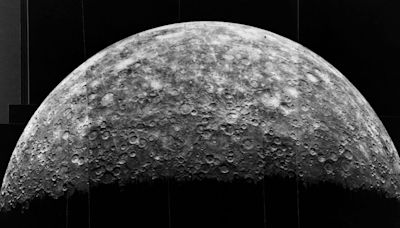Search results
What About the Moon? You walk along a beach, seashells, driftwood and seaweed left by the retreating tides at your feet. Look up at the Moon, and you’re seeing the main cause of the surge and retreat of oceans from our shores. As distant as the Moon may seem, its gravitational pull on Earth plays a huge role in the formation of tides.
Tides are the rise and fall of sea levels caused by the combined effects of the gravitational forces exerted by the Moon (and to a much lesser extent, the Sun) and are also caused by the Earth and Moon orbiting one another. Tide tables can be used for any given locale to find the predicted times and amplitude (or "tidal range").
Tides can be defined as the alternate rise and fall of the ocean water. It is caused by the combined effects of : The gravitational force exerted on Earth by the Sun. The gravitational force exerted on Earth by the Moon. Rotation of the Earth. What are the types of tides & what causes these tides?
Aug 5, 2021 · Twice a month, when the Earth, Sun, and Moon line up, their gravitational power combines to make exceptionally high tides, called spring tides, as well as very low tides where the water has been displaced. When the Sun is at a right angle to the Moon, moderate tides, called neap tides, result.
May 3, 2024 · tide, any of the cyclic deformations of one astronomical body caused by the gravitational forces exerted by others. The most familiar are the periodic variations in sea level on Earth that correspond to changes in the relative positions of the Moon and the Sun.
Oct 19, 2023 · kinetic energy produced by the movement of air, able to be converted to mechanical power. The regular rise and fall of the ocean’s waters are known as tides. Along coasts, the water slowly rises up over the shore and then slowly falls back again.
Jun 16, 2024 · Tides are very long-period waves that move through the ocean in response to the forces exerted by the moon and sun. Tides originate in the ocean and progress toward the coastlines where they appear as the regular rise and fall of the sea surface.
Jun 13, 2024 · The Short Answer: High and low tides are caused by the moon. The moon's gravitational pull generates something called the tidal force. The tidal force causes Earth—and its water—to bulge out on the side closest to the moon and the side farthest from the moon. These bulges of water are high tides. What Causes Tides? Watch on.
Because the tidal force of the Moon is more than twice as strong as the Sun's, the tides follow the lunar day, not the solar day. It takes half a lunar day, on average 12 hours and 25 minutes, from one high tide to the next, so we have high and low tides nearly twice a day.
Oct 19, 2023 · noun. small pond created by an ebb tide and submerged by a high tide. The gravitational pull of the moon and the rotational force of the Earth cause tides to rise and fall across the planet. The species living in coastal areas most affected by changing tides have unique ways of surviving.

